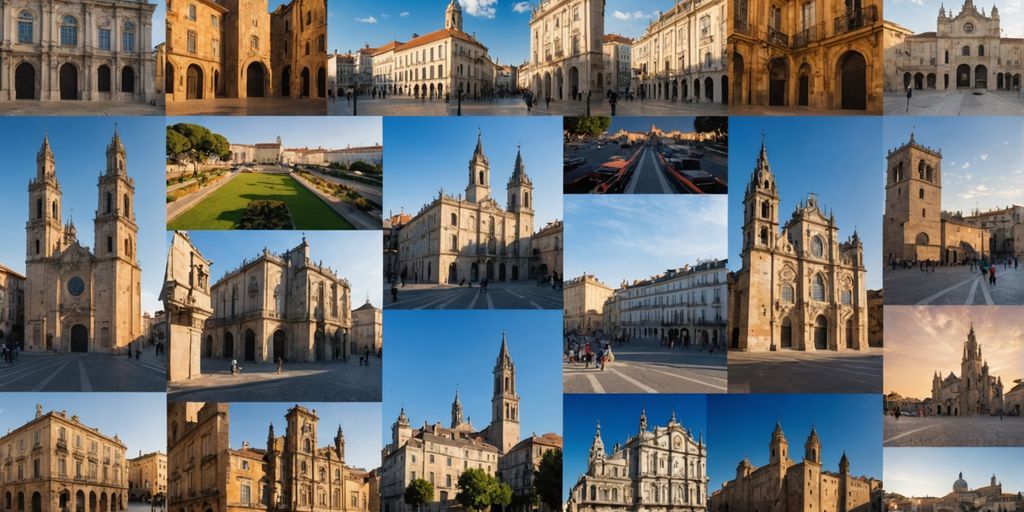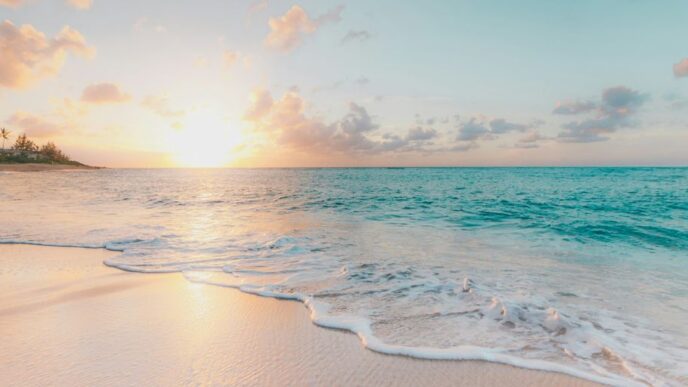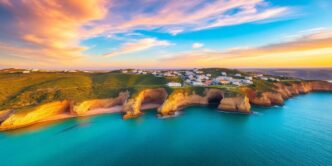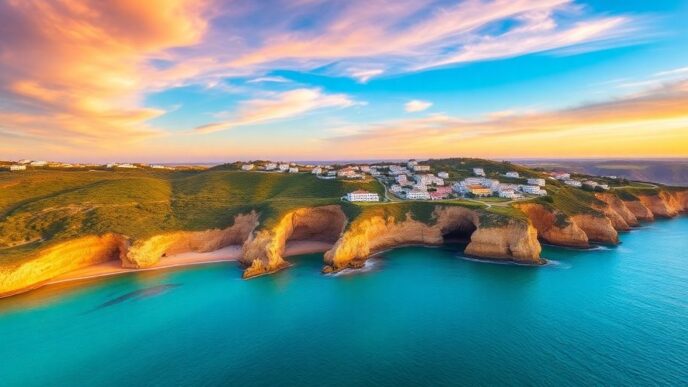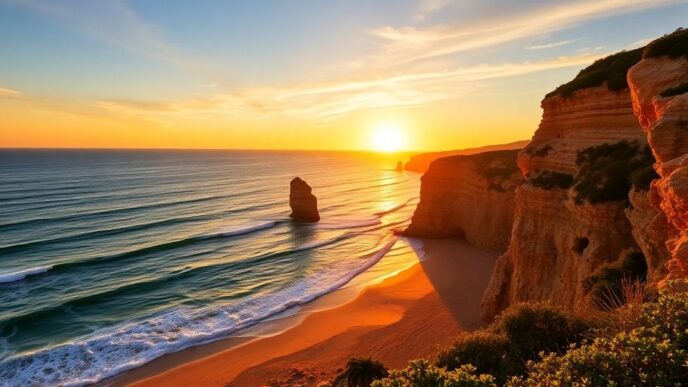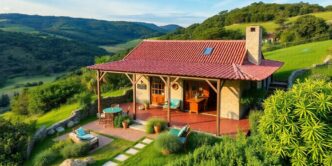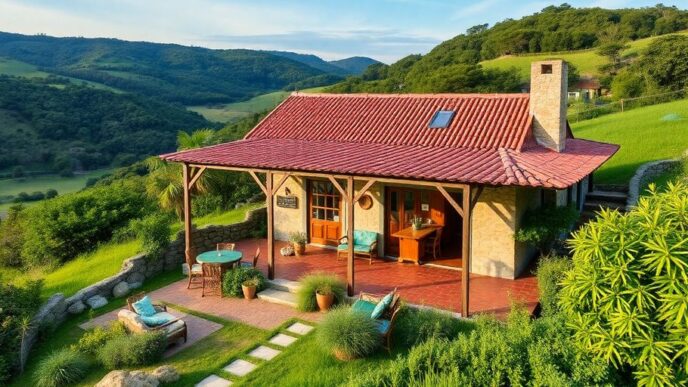The Ancient Roots of Portugal, Spain, and France
Iberian and Celtic Tribes
The Iberian Peninsula was home to Iberian tribes and Celtic peoples. These groups laid the foundation for the region’s rich history. They lived in small communities and practiced agriculture and metalworking.
Roman Conquests and Influence
The Romans conquered the Iberian Peninsula and parts of modern-day France. They built roads, cities, and aqueducts, leaving a lasting impact. Roman culture, language, and laws influenced the local populations.
Visigoth and Moorish Rule
After the fall of the Roman Empire, the Visigoths took control. They ruled until the Moors invaded. The Moors brought new technologies, crops, and architectural styles, enriching the region’s culture.
Medieval Kingdoms and Empires
The Rise of the Portuguese Kingdom
Portugal’s history is a blend of Iberian tribes, Celtic peoples, and Roman influence. The Suevi and Visigoths ruled before the Moors. The Kingdom of Portugal emerged in 1139, with Afonso I as its first king. The Braganza dynasty later played a key role in its history.
The Unification of Spain
Spain’s unification began with the marriage of Ferdinand II of Aragon and Isabella I of Castile in 1469. This union led to the Reconquista, ending Moorish rule in 1492. Spain then became a major world power.
Feudal France and the Capetian Dynasty
France’s medieval history is marked by the Capetian dynasty, starting in 987 with Hugh Capet. Feudalism shaped the social and political structure. The Capetians expanded their territory and influence, laying the foundation for modern France.
The Age of Exploration and Colonization
Portuguese Navigators and Global Trade
The age of discovery in Portugal, led by Prince Henry the Navigator, reshaped global history through pioneering maritime exploration, trade dominance, and lasting cultural impacts. Portuguese explorers established a European trading post empire, tapping into African trade routes and reaching India and Brazil.
Spanish Conquistadors in the New World
Spanish adventurers were fascinated by the Aztec wealth in gold. They established the first European settlements in the Americas, starting in the Caribbean and spreading to Central and South America by 1600. Their conquests brought immense wealth and changed the course of history.
French Expeditions and Colonial Ambitions
France also sought to expand its influence through exploration. French expeditions focused on North America, establishing colonies in Canada and Louisiana. Their colonial ambitions led to cultural exchanges and new trade opportunities.
Cultural Renaissance and Artistic Flourish
The Renaissance and Baroque periods in Portugal were marked by cultural and artistic achievements. Portuguese Manueline architecture, with its intricate designs, became prominent. This style is a blend of Gothic, Moorish, and Renaissance elements.
Spain experienced a Golden Age of art and literature. This era saw the rise of famous artists like El Greco and writers like Cervantes. Their works left a lasting impact on Spanish culture.
In France, the Renaissance and Enlightenment periods brought about significant changes. French art and philosophy flourished, influencing the rest of Europe. The works of artists like Claude Monet and philosophers like Voltaire are still celebrated today.
Revolution and Modern Nationhood
The Portuguese Liberal Revolution began in 1820. It aimed to end absolute monarchy. The revolution led to a constitutional monarchy. Portugal’s overseas territories were affected by these changes.
The Spanish Civil War started in 1936. It was a conflict between Republicans and Nationalists. General Francisco Franco led the Nationalists to victory. Franco ruled Spain until 1975.
The French Revolution began in 1789. It ended the monarchy and led to a republic. Napoleon Bonaparte rose to power during this time. His rule expanded French influence across Europe.
UNESCO World Heritage Sites in Portugal, Spain, and France
Historic Centers and Landmarks
Explore the historic centers of Lisbon, Porto, and Évora in Portugal. In Spain, visit the old towns of Toledo and Salamanca. France offers the medieval city of Carcassonne and the historic center of Avignon.
Architectural Marvels
Portugal’s Belém Tower and Jerónimos Monastery are must-sees. Spain boasts the Alhambra and Sagrada Família. France’s Eiffel Tower and Notre-Dame Cathedral are iconic.
Natural Wonders
Portugal’s Douro Valley is famous for its wine. Spain’s Teide National Park and France’s Mont-Saint-Michel Bay are breathtaking natural sites.
Culinary Traditions and Local Cuisines
In Portugal, seafood is a staple. Dishes like bacalhau and grilled sardines are popular. Pasteis de nata, a sweet pastry, is a must-try. Pair these with local wines for a complete experience.
Spain is famous for its tapas, small dishes that are perfect for sharing. Paella, a rice dish with seafood or meat, is another highlight. Enjoy these with a glass of sangria.
France offers a variety of wines and cheeses. Each region has its own specialties. From Brie to Roquefort, there’s something for everyone. Pair these with a fresh baguette for a true French experience.

